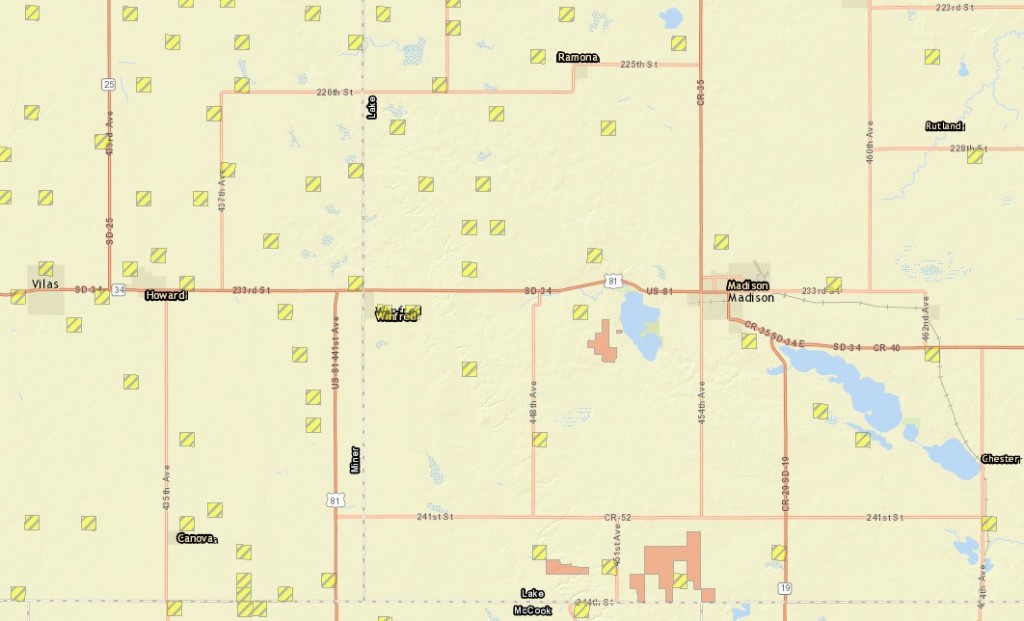On our way home from the in-laws’ last week, my lovely wife observed that Nebraska highways appear to have more wildflowers in the medians and ditches than South Dakota highways.
As if he had our car bugged, Governor Dennis Daugaard responds to an e-mail from marketing consultant Gary Grasmoen (noticed on Twitter by the increasingly Web-attentive Bob Mercer) and notes that South Dakota is working on roadside wildflowers:
Thanks, SD Governor Daugaard for your personal note. You set an example for all govs. @kelsey_pritch @SDGovDaugaard pic.twitter.com/UoW48dyJbb
— GGrasmoen (@GGrasmoen) July 15, 2015
Note the Governor’s handwritten postscript:
P.S. We will also be converting grass turf areas near the Hilgers Gulch area, in Pierre, to wild flowers [Governor Dennis Daugaard, letter to Gary Grasmoen, July 2015; tweeted by Grasmoen 2015.07.15].
Right before that postscript, the Governor says the state Department of Agriculture is working on a Pollinator Protection Plan “to identify and promote best management practices for beekeepers, landowners, and farmers. The SDDA will be working with stakeholder groups and the public for input in developing this plan.” South Dakota makes lots of honey, so it makes sense that we would look for ways to protect pollinators from the Colony Collapse Disorder that’s been plaguing beekeepers.
Grasmoen chirps happily about the Governor’s exemplary personal note. Grasmoen’s other tweets and retweets suggest he doesn’t think as highly of President Obama. Grasmoen should thus note that, on bees, Governor Daugaard appears to be following the lead of President Obama, who empaneled a pollinator task force in June 2014. That task force released a Pollinator Research Action Plan on May 19, 2015. Expanding pollinator habitat along rights-of-way—roads, rail, pipelines, powerlines—is a key part of the President’s pollinator protection strategy. Among the specific plans is exploration of a project to turn I-35 into a monarch butterfly flyway:
Even big ideas like that may not be enough. NPR reports that environmentalists say the President’s plan to help bees and butterflies doesn’t do enough to tackle the problem of pesticides, which appear to be an important cause of bee colony collapse. Planting flowers (and milkweed for the monarchs… but for Pete’s sake, plant native milkweed, not the tropical version!) helps bees and butterflies, but getting corporate ag to stop pouring chemicals all over their factory fields would help, too.
South Dakota’s Pollinator Protection Plan may call for planting lots of flowers, but don’t expect the South Dakota Department of Agriculture to do much to sting the corporate ag lobby that runs it.
Bonus Map! Among its beekeeping resources, the state Department of Agriculture offers this Sensitive Site Registry, a super-duper map of bee apiaries and certified organic farms. Here’s a snapshot of bee country around Madison and Howard:

Daugaard is about 25 years behind iowa. Iowa Living Roadway Trust
http://www.iowadot.gov/lrtf/
MN is behind Iowa too Mike, by around 10 years. Iowa is such an interesting conservative – no, liberal – no, conservative – state.
Saving pollinators is probably the single most critical issue confronting agriculture, big or small. What do Monsanto, Cargill, Smithfield, etc., think they’ll do without pollinators? Are they planning on crops so heavily GMOed that they don’t require pollination? If so, will those crops and resultant “food”, even be recognizable to us?